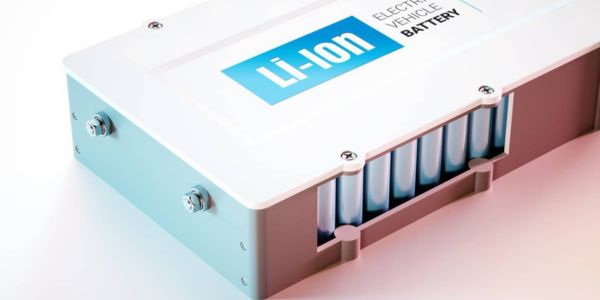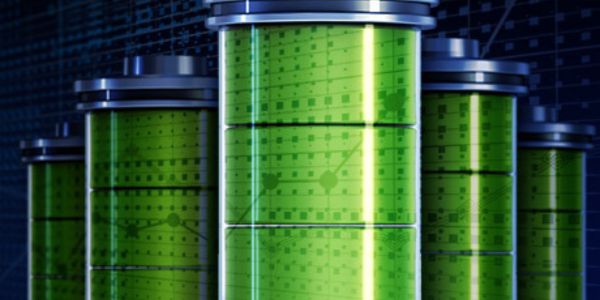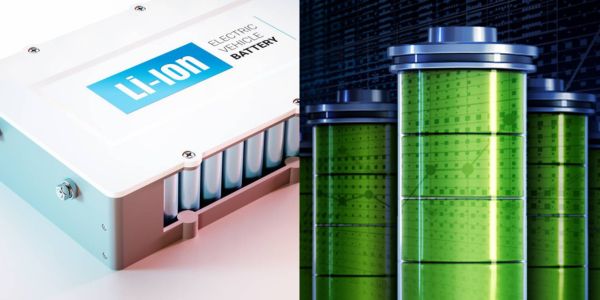Batteries are the heartbeat of modern technology, powering smartphones, electric vehicles (EVs), and renewable energy systems. As the world shifts toward sustainability, understanding the chemistry behind lithium-ion batteries and next-generation alternatives is key to grasping how we’ll power the future. In this article, we explore how these batteries work, the rise of next-gen technologies, and India’s growing role in battery innovation by 2025.

What Are Lithium-Ion Batteries and How Do They Work?
Lithium-ion batteries (LIBs) are rechargeable powerhouses known for their high energy density and long lifespan. They dominate applications from consumer electronics to EVs due to their efficiency and compact design.
Key Components of Lithium-Ion Batteries
- Anode (Negative Electrode): Typically made of graphite, it stores lithium ions during charging. Advanced designs use silicon for higher capacity, though it faces durability challenges.
- Cathode (Positive Electrode): Often composed of lithium nickel manganese cobalt oxide (NMC) or lithium iron phosphate (LFP), the cathode determines the battery’s capacity and voltage.
- Electrolyte: A liquid or gel solution that conducts lithium ions between electrodes. Its flammability poses safety risks.
- Separator: A porous membrane that prevents short circuits while allowing ion flow.
- Current Collectors: Copper (anode) and aluminum (cathode) foils that channel electrons to power devices.
How Lithium-Ion Batteries Function
- During Discharge: Lithium ions move from the anode to the cathode through the electrolyte, while electrons flow through an external circuit, generating electricity to power devices.
- During Charging: An external power source reverses the process, pushing lithium ions back to the anode for energy storage.
- Energy Density: LIBs deliver 100–260 Wh/kg, making them ideal for compact, high-performance applications.
- Cycle Life: They can endure thousands of charge-discharge cycles, though degradation occurs due to electrolyte breakdown and electrode wear.
Why Lithium-Ion Batteries Matter
- Pros: High energy density, long cycle life, and declining costs (approaching €100/kWh by 2025).
- Cons: Safety risks from flammable electrolytes, reliance on scarce materials like cobalt and lithium, and environmental concerns from mining.
Must Read: Apple WWDC 2025: Top Announcements, iOS 26, and Apple Intelligence Unveiled

Next-Generation Batteries: The Future of Energy Storage
To address lithium-ion battery limitations, next-gen technologies like solid-state, sodium-ion, and lithium-sulfur batteries are gaining traction. These innovations promise improved safety, sustainability, and performance.
1. Solid-State Batteries (SSBs)
- How They Work: SSBs replace liquid electrolytes with solid materials (e.g., ceramics or polymers), using lithium metal anodes for higher energy density.
- Benefits:
- Up to 350 Wh/kg energy density, potentially doubling LIBs.
- Non-flammable, enhancing safety.
- Faster charging (under 10 minutes) and longer lifespan.
- Challenges: High production costs and scalability hurdles. Commercialization is expected post-2025, with companies like Toyota targeting 2026–2027.
- Example: QuantumScape’s SSB trials with Volkswagen aim for EV integration by 2025.
2. Sodium-Ion Batteries (SIBs)
- How They Work: Sodium ions replace lithium, using hard carbon anodes and sodium-based cathodes. They operate similarly to LIBs but with lower energy density.
- Benefits:
- Cost-effective due to abundant sodium.
- Safer, with potential for non-flammable electrolytes.
- Ideal for grid storage and short-range EVs.
- Challenges: Lower energy density and shorter cycle life.
- Example: India’s sodium-ion prototypes achieve 80% charge in 6 minutes, reducing reliance on lithium imports.
3. Lithium-Sulfur Batteries (Li-S)
- How They Work: Sulfur cathodes and lithium metal anodes offer high theoretical energy density (up to 500 Wh/kg).
- Benefits: Lightweight and cost-effective, ideal for aviation and space.
- Challenges: Polysulfide dissolution reduces lifespan, with commercialization likely post-2025.
4. Other Innovations
- Graphene Batteries: Use graphene anodes for faster charging but are costly.
- Lithium-Air Batteries: Offer ultra-high energy density but face stability issues.
- Zinc-Based/Iron-Air Batteries: Sustainable options for grid storage, though less energy-dense.
India’s Role in Battery Technology by 2025
India is emerging as a global leader in battery manufacturing and innovation, driven by its EV and renewable energy ambitions. By 2025, the country is set to transform its battery ecosystem.
Market and Demand
- Growth Forecast: India’s lithium-ion battery demand is projected to hit 54 GWh by FY27 and 127 GWh by FY30, fueled by EVs (30% penetration by 2030) and grid storage.
- Applications: EVs, renewable energy, consumer electronics, and stationary storage.
Manufacturing Surge
- Giga Factories: The Production-Linked Incentive (PLI) scheme supports 50 GWh of advanced chemistry cell (ACC) production. Key players include:
- Reliance Industries: Building a giga factory in Jamnagar for LFP and sodium-ion batteries.
- Tata Group: A 20 GWh LIB plant in Sanand, operational by 2025.
- Log9 Materials: Expanding to 1 GWh in Bengaluru.
- GODI India: Producing silicon-anode NMC811 cells.
- Import Reduction: Domestic production will cut import dependency from 100% (15 GHigh in 2024) to 20% by FY27.
- 2025 Budget Boost: Duty exemptions on cobalt, lithium-ion scrap, and capital goods lower costs.
Raw Materials and Recycling
- Lithium Reserves: Discoveries in Jammu & Kashmir and Rajasthan could meet 80% of India’s lithium needs.
- Recycling: Companies like Attero and Tata Chemicals recover cobalt, nickel, and lithium, supported by the 2022 Battery Waste Management Rules.
Innovation and R&D
- Sodium-Ion Breakthroughs: Indian researchers are developing fast-charging SIBs to reduce lithium reliance.
- Indigenous Cells: Boson Cell’s locally made LIBs offer 3x longer cycle life than Chinese alternatives.
- Collaborations: Partnerships with academia and global firms (e.g., Toshiba) drive progress.
Policy and Sustainability
- National Mission on Transformative Mobility: Promotes giga factories and EV adoption.
- Environmental Goals: Align with India’s 2030 targets for 500 GW non-fossil energy and 50% renewable electricity.
- Challenges: High temperatures degrade battery performance, and informal recycling needs regulation.
Global Impact
India’s focus on LFP and sodium-ion batteries positions it as a leader in sustainable battery tech. By 2025, India aims to export LIBs, leveraging cost advantages and innovation.
Why Batteries Are Key to a Sustainable Future
Batteries are central to the global energy transition. Lithium-ion batteries power today’s devices and EVs, while next-gen technologies like solid-state and sodium-ion batteries promise safer, greener, and more efficient energy storage. India’s rapid advancements in manufacturing, recycling, and R&D make it a key player in this space, supporting its clean energy goals and global ambitions.

